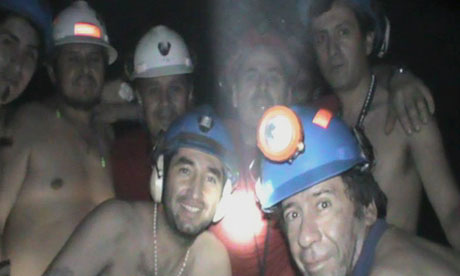The Real World

October 2010 The Psychologist, 23 (10), 790.
As we write this piece, the attention of much of the world’s press is focused on the San Jose mine in Copiapó, Chile, where 33 miners remain trapped three-quarters of a kilometre underground. The fact that they are alive is a miracle in itself, but now questions are being asked about their psychological state and the issue of how they will cope with months of entombment in a state of chronic privation. The scenario is indeed nightmarish, and the psychological literature is replete with terminology, theory, and case studies that would give little cause for optimism. If ever there was a situation guaranteed to crush a person in body and spirit, this surely would be it.
In recent years, however, researchers have started to develop a psychological narrative which moves beyond the idea that humans succumb passively to those forces (whether natural or social) which subjugate and imprison them. One of the first researchers to chart this alternative trajectory was Peter Suedfeld, whose work with Holocaust survivors and polar explorers alerted him to the phenomenon of salutogenesis — a term coined by Aaron Antonovsky to describe the human capacity to rise to adversity and to overcome it.
In this context, it is interesting too that whereas once the psychological literature was dominated by a view that members of subjugated groups could only ever succumb to their role, increasingly researchers have articulated a psychology of resilience and resistance in which the subjugated fight back.
The work of John Drury and colleagues at the University of Sussex is emblematic in this regard. Looking at survivors in a range of contexts — most notably the London bombings — this has shown that in the most appalling of circumstances, people are capable of coming together to turn individual vulnerability into combined strength. Ironically, the belief that people are vulnerable and that they panic under extreme circumstances can lead the Emergency Services to intervene in such a way that they disrupt this self-organization and hence undermine collective resilience.
In all this work, one key psychological ingredient stands out as having particular protective properties: the social group. In particular, this is because where people feel bound together by a sense of common fate, their shared identity proves to be a powerful resource on which basis they can both give and receive social support. This in turn leads to an enhanced sense that one has the resources to cope with hard times and hence reduces stress. But, as a group, people are also better able to imagine a positive future and to see that they have the collective will to bring it about.
Deep in the bowels of the Chilean earth, a strong collective identity is undoubtedly the miner’s greatest psychological resource. The best way to protect their psychological well-being is to help build this sense of identity. The best way of protecting vulnerable individuals is to ensure that they are not isolated from the group. Of course, collective identity alone will not guarantee a happy ending. But it does ensure that they will not yield helplessly to nature, and that, however it turns out, their struggle will be a source of both inspiration and celebration.
The Real World
A Migrant is not a migrant by any other name
October 2015
It's a man's (virtual) world
June 2014
Putin: The Naked Truth
April 2014
Genius and creativity (re)explained
October 2013
In praise of asylums
September 2013